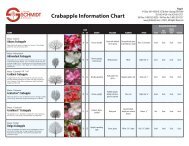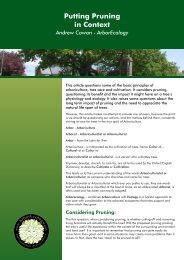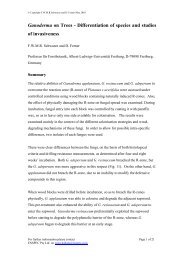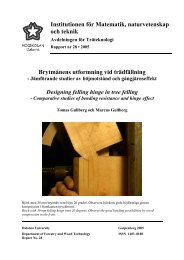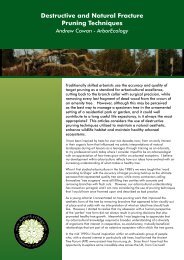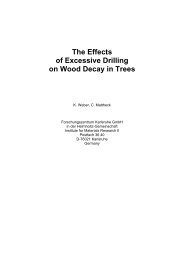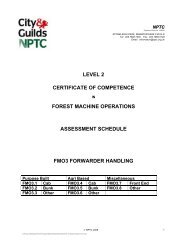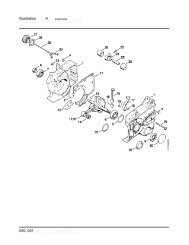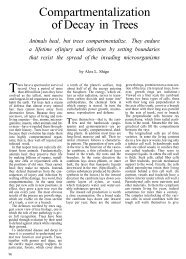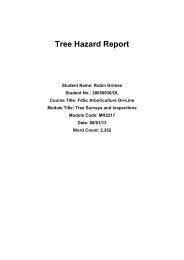HORÁCEK, I., BOGDANOWICZ, W. & DULIC, B. 2004. Plecotus austriacus (Fischer,1829) – Graues Langohr. In: KRAPP, F. ed. Handbuch der Säugetiere Europas, Band 4:Fledertiere, Teil II: Chiroptera II, 1001-1049. Wiebelsheim: Aula-Verlag.HÜBNER, G. & PAPADOPOULOS, R. 1998. Jagdkanzeln als Sommerquartiere fürspaltenbewohnende Fledermäuse. AFZ/Der Wald, 53, 309-311.HÜBNER, G. 1999. Fledermäuse an Jagdkanzeln – Nutzung und Eignung neu eingerichteterSpaltenquartiere. Landschaftspflege und Naturschutz in Thüringen, 36, 57-58.HÜBNER, G. 2000. Besiedlungsmuster künstlicher Gebäudespaltenquartiere fürFledermäuse außerhalb von Siedlungsgebieten – Ergebnisse aus zwei Jagdrevieren inNordbayern und Südthüringen. Nyctalus (N.F.), 7, 351-359.HÜBNER, G. 2001. Spaltenstrukturen an Jagdkanzeln als Fledermausquartiere – eineDokumentation mit Anmerkungen zu weiteren Quartiernutzern. Nyctalus (N.F.), 8, 21-27.HÜBNER, I. 1991. Untersuchungen zur Lebensweise der Breitflügelfledermaus Eptesicusserotinus Schreber, 1774 in Hollingstedt/Schleswig Holstein. Diploma thesis, University ofKiel.HURKA, L. 1989. Die Säugetierfauna des westlichen Teils der TschechischenSozialistischen Republik, Teil II: Die Fledermäuse (Chiroptera). Folia Mus. Rer. Natur.Bohem. Occid., Zool., 29, 1-61.HÜTTENBÜGEL, S., SIMON, M. & MAYER, F. 1998. Regionale Strukturierung vonWochenstuben der Zwergfledermaus (Pipistrellus pipistrellus Schreber, 1774): ein Vergleichanhand von mitochondrialer DNA. Zeitschrift Für Säugetierkunde, 63, 27-28.IFFERT, D., TRESS, C. & TRESS, J. 1989. Kastenbesatz durch Fledermäuse inAbhängigkeit zur Waldstruktur im Forstrevier Hahnenhorst (Wooster-Teerofen). In:HEIDECKE, D. & STUBBE, M. eds. Populationsökologie von Fledermausarten Teil 2, 277-289. Wissenschaftliche Beiträge der Martin-Luther-Universität Halle-Wittenberg, ReiheP/36.INTERESSENGEMEINSCHAFT FLEDERMAUSSCHUTZ UND –FORSCHUNGTHÜRINGEN E.V. 2002. Erfassung von unterirdischen Sommerquartieren der KleinenHufeisennase (Rhinolophus hipposideros Bechstein, 1800) in Thüringen im Rahmen derUmsetzung des Artenhilfsprogrammes. –Unpublished report, Thüringer Landesanstalt fürUmwelt und Geologie, Jena.ISSEL, B. & ISSEL, W. 1955. Versuche zur Ansiedlung von „Waldfledermäusen" inFledermauskästen. Forstwissenschaftliches Centralblatt, 74 (7/8), 193-256.JANSEN, E. A. 1993. Fledermauskartierung 1992 in Kassel mit Detektoren. Nyctalus (N.F.), 4, 587-620.JARZEMBOWSKI, T., RYMARZAK, G. & STEPNIEWSKA, A. 1998. Forest habitatpreferences of Pipistrellus nathusii (Chiroptera: Vespertilionidae) in Northern Poland.Myotis, 36, 177-182.JENSEN, B. 1993. Nordens pattedyr. København: G. E. C. Gad.72
JONES, G. 1990. Prey selection by the greater horsshoe bat (Rhinolophus ferrumeqiunum):optimal <strong>for</strong>aging by echolocation? Journal of Animal Ecology, 59, 587–602.JONES, G. & RYDELL, J. 1994. Foraging strategy and predation risk as factors influencingemergence time in echolocating bats. Phil. Trans. R. Soc. Lond., B 346, 445–455.JONES, G., VAUGHAN, N. & PARSONS, S. 2000. Acoustic identification of bats fromdirectly sampled and time expanded recordings of vocalizations. Acta Chiropterologica, 2,155-170.JONG, J. DE 1995. Habitat use and species richness of bats in a patchy landscape. ActaTheriologica, 40, 237-248.JONG, J. DE & AHLEN, I. 1991. Factors affecting the distribution pattern of bats inUppland, central Sweden. Holarctic Ecology, 14, 92-96.KALKO, E. K. V. & SCHNITZLER, H-U. 1993. Plasticity in echolocation signals ofEuropean pipistrelle bats in search flight: implications <strong>for</strong> habitat use and prey detection.Behavior, Ecology and Sociobiology, 33, 415–428.KALKO, E. K. V. & SCHNITZLER, H.-U. 1989. The echolocation and hunting behaviourof Daubenton`s`s bat, Myotis daubentoni. Behavior, Ecology and Sociobiology, 24, 225–238.KALLASCH, C. & LEHNERT, M. 1995. Ermittlung des Bestandes eines großenFledermauswinterquartiers – Vergleich zweier Erfassungsmethoden. In: STUBBE, M.,STUBBE, A. & HEIDECKE, D. eds. Methoden feldökologischer Säugetier<strong>for</strong>schung, 389-396. Halle/Saale: Martin-Luther-Universität.KERTH, G. 1998. Sozialverhalten und genetische Populationsstruktur bei derBechsteinfledermaus Myotis bechsteini. Berlin: Wissenschaft und Technik Verlag.KERTH, G., MAYER, F. & KÖNIG, B. 2000. Mitochondrial DNA (mtDNA) reveals thatfemale Bechstein´s bats live in closed societies. Molecular Ecology, 9, 793-800.KERTH, G., WEISSMANN, K., & KÖNIG, B. 2001. Day roost selection in femaleBechstein’s bats (Myotis bechsteinii) in a field experiment to determine the influence of roosttemperature. Oecologia, 126, 1-9.KERTH, G., and others. 2002. Habitat- und Quartiernutzung bei der Bechsteinfledermaus:Hinweise für den Artenschutz. In: MESCHEDE, A., HELLER, K.-G. & BOYE, P. eds.Ökologie, Wanderungen und Genetik von Fledermäusen in Wäldern – Untersuchungen alsGrundlage für den Fledermausschutz, 99-108. Münster: Landwirtschaftsverlag.Schriftenreihe für Landschaftspflege und Naturschutz 71.KIEFER, A. & BOYE, P. 2004a, in prep. Plecotus auritus (Linnaeus, 1758). In: Petersen,B., and others eds. Das europäische Schutzgebietssystem Natura 2000. Ökologie undVerbreitung von Arten der FFH-Richtlinie in Deutschland. Münster: Landwirtschaftsverlag.Schriftenreihe für Landschaftspflege und Naturschutz 69/2.KIEFER, A. & BOYE, P. 2004b, in prep. Plecotus austriacus (J. B. Fischer, 1829). In:PETERSEN, B., and others. eds. Das europäische Schutzgebietssystem Natura 2000.73
- Page 3:
English Nature Research ReportsNumb
- Page 7 and 8:
ContentsPreamble1. Legal aspects...
- Page 9 and 10:
1. Legal aspectsThere are three int
- Page 11 and 12:
to the Agreement decided that the c
- Page 13 and 14:
Country European Community EUROBATS
- Page 15 and 16:
types in Europe where many of the e
- Page 17 and 18:
• the European Commission initiat
- Page 19 and 20:
Foraging areas: Central European sp
- Page 21 and 22: Other roosts: In foraging areas and
- Page 23 and 24: Brandt’s bat travels up to 250 ki
- Page 25 and 26: others 2004). Maternity colonies al
- Page 27 and 28: 1995, The Netherlands: Limpens and
- Page 29 and 30: from a maternity colony covered a t
- Page 31 and 32: hibernaculum is the Levensau Bridge
- Page 33 and 34: female (Fuhrmann and others 2002).
- Page 35 and 36: Foraging areas: In Central Europe f
- Page 37 and 38: Table 2 Importance of tree holes fo
- Page 39 and 40: sites it was found that the possibi
- Page 41 and 42: advancing age of a tree its potenti
- Page 43 and 44: floor up to the canopy and beyond c
- Page 45 and 46: Table 6 Overview of the most freque
- Page 47 and 48: 6.2 2nd step: Active search for roo
- Page 49 and 50: This first approach to a woodland b
- Page 51 and 52: number of tree-dwelling birds in pr
- Page 53 and 54: Types of boxes used by batsThere ar
- Page 55 and 56: oxes exposed to the sun. As an exam
- Page 57 and 58: Con: Bats use bat boxes selectively
- Page 59 and 60: 9. ReferencesABULADZE, A., BUXNIKAS
- Page 61 and 62: BEKKER, J.P. 1990. Ervaringen met v
- Page 63 and 64: BRAUN, M., & HÄUSSLER, U. 2003c. K
- Page 65 and 66: Ökologie und Verbreitung von Arten
- Page 67 and 68: (Germany). In: PRIEDE, I. G. & SWIF
- Page 69 and 70: (Nyctalus leisleri) sowie zur Besie
- Page 71: HEISE, G. 1985. Zu Vorkommen, Phän
- Page 75 and 76: (Chiroptera: Vespertilionidae). - P
- Page 77 and 78: Ökologie und Verbreitung von Arten
- Page 79 and 80: PÉREZ, J. L. & IBÁÑEZ, C. 1991.
- Page 81 and 82: ROTTMANN, R., BOYE, P. & MEINIG, H.
- Page 83 and 84: SCHORCHT, W., and others. 2002. Zur
- Page 85 and 86: STUTZ, H.-P. B. & HAFFNER, M. 1989.
- Page 87 and 88: WAGNER, M., KERTH, G. & KÖNIG, B.
- Page 89: 10. AuthorsDr. Peter Boye became fa



